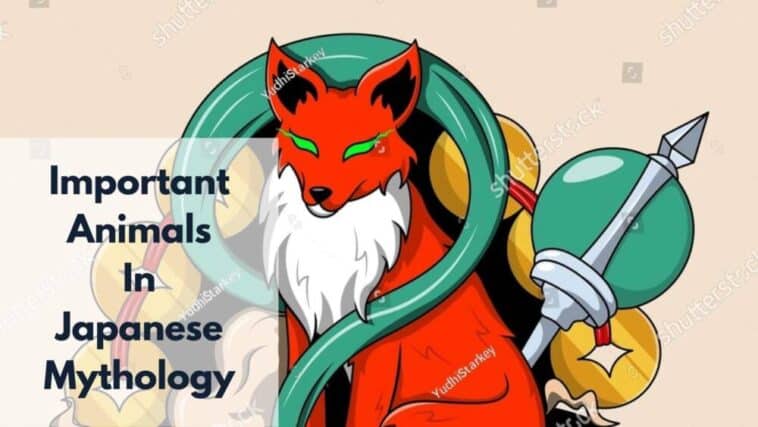Want to learn about animals in Japanese mythology? Here’s a list of the most significant animals in Japanese mythology you should know about.
Japan has a rich cultural heritage, and its mythology is a vital component of it. Japanese mythology is a collection of stories, beliefs, and legends that have been passed down through generations.
Animals have played a significant role in Japanese mythology, and they are often depicted as powerful, spiritual beings.
In this article, we will explore some of the most important animals in Japanese mythology.
Page Contents
Important Animals In Japanese Mythology
Dragons in Japanese Mythology

Dragons have played a significant role in Japanese mythology for centuries.
Known as “Ryū,” dragons are revered as powerful and awe-inspiring creatures with the ability to control water, fire, and the elements.

In Japanese culture, dragons are symbols of strength, wisdom, and good fortune.
One of the most famous legends about dragons in Japanese mythology is the story of the “Dragon King.”
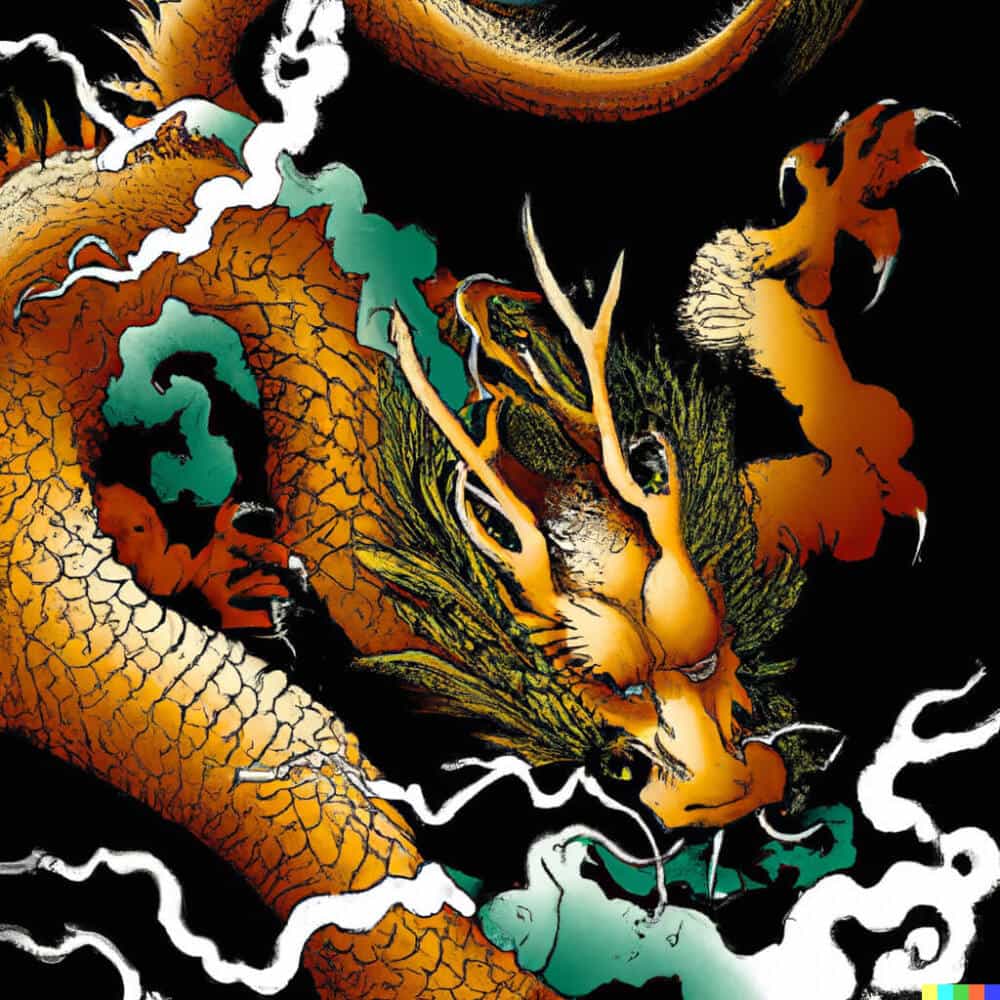
According to the legend, the Dragon King ruled over the sea and was responsible for controlling the tides and the waves.
The Dragon King was also believed to have the power to bring rain, which was vital for crops and agriculture.
In addition to their association with water and the sea, dragons are also believed to be guardians of the land.
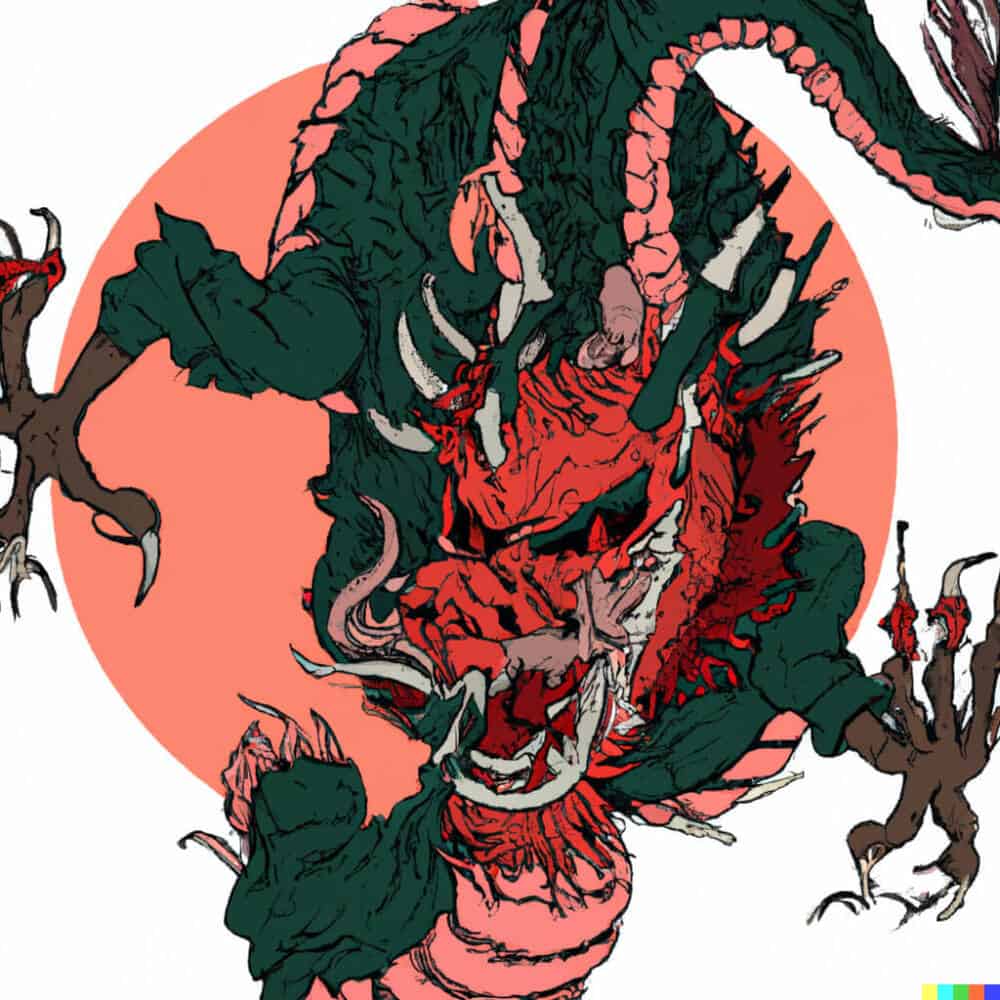
In Japanese folklore, dragons are often depicted as powerful protectors of nature and the environment.
It is said that they have the power to control the weather, and they can summon rain or snow to help nourish the earth.
Dragons are also believed to be associated with the Emperor of Japan. The dragon is considered to be a symbol of imperial power and is often used in official Japanese regalia.
The “Imperial Seal of Japan,” for example, features a stylized dragon with three claws, representing the emperor’s power over heaven, earth, and humanity.
In Japanese art, dragons are often depicted with long, snake-like bodies, long horns, and sharp claws.
They are often portrayed as ferocious creatures with scales that are impenetrable to arrows and other weapons.
Despite their fearsome appearance, however, dragons are also believed to be benevolent creatures that bring good fortune and prosperity to those who honor them.
Overall, dragons are an important and revered symbol in Japanese mythology.
They are associated with the elements, nature, and the Emperor of Japan, and they are revered for their power, wisdom, and ability to bring good fortune and prosperity to those who respect them.
Fox In Japanese Mythology
Foxes, known as “Kitsune” in Japanese, have played a significant role in Japanese mythology for centuries.
In Japanese folklore, foxes are often depicted as magical creatures with the ability to shape-shift into humans, other animals, or objects.
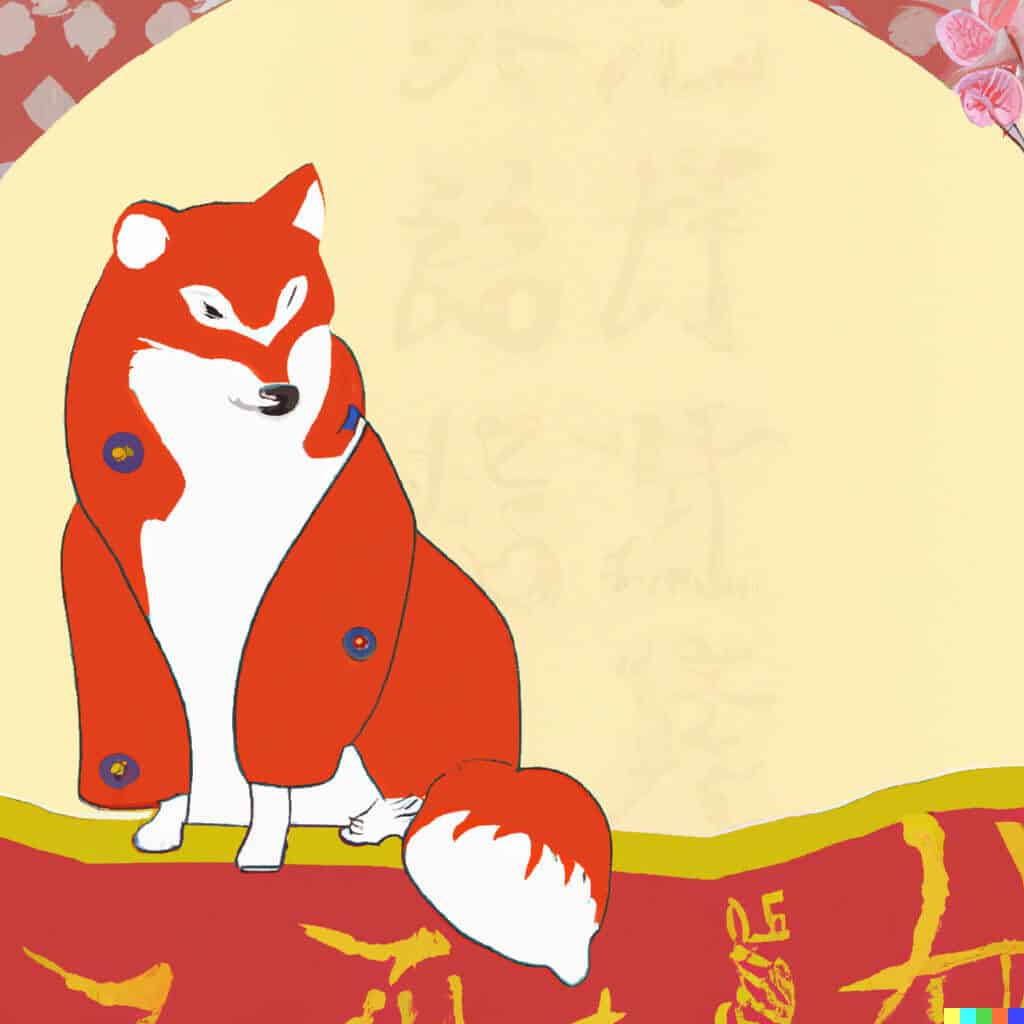
They are often portrayed as mischievous and cunning creatures with supernatural powers.
One of the most well-known legends about foxes in Japanese mythology is the story of the “Kitsune-tsuki.”
According to the legend, a fox can enter the body of a human and control their actions.
In some versions of the story, the Kitsune-tsuki is believed to be a form of possession, where the fox takes control of a human’s mind and body.
In other versions, it is believed to be a form of transformation, where the fox takes on the appearance and personality of a human.
In Japanese folklore, foxes are also associated with the god Inari, who is the god of agriculture, fertility, and prosperity.
It is said that foxes serve as messengers of Inari and can bring good fortune and success to those who honor him.
Inari’s shrines are often guarded by statues of foxes, and offerings of rice or sake are left to appease the foxes and bring good luck.
Foxes are also associated with fire in Japanese mythology. It is believed that they have the power to control fire and can create orbs of light that can be used for illumination or to confuse their enemies.
In some stories, foxes are said to have the ability to breathe fire, and they are often depicted with flames around their tails.
In Japanese art, foxes are often depicted with multiple tails, representing their power and wisdom.
The more tails a fox has, the more powerful and wise it is believed to be. Nine-tailed foxes, in particular, are considered to be very powerful and are often associated with the goddess Amaterasu.
Overall, foxes are an important and fascinating part of Japanese mythology.
They are associated with transformation, magic, fire, and good fortune, and they are revered for their intelligence, cunning, and ability to bring success and prosperity to those who honor them.
Tanuki In Japanese Mythology
Tanuki, also known as “raccoon dogs,” have been a part of Japanese mythology for centuries. In Japanese folklore, tanuki are depicted as mischievous and shape-shifting creatures that have the power to transform into humans, animals, and even objects.
They are often portrayed as tricksters with a fondness for sake and a love of practical jokes.
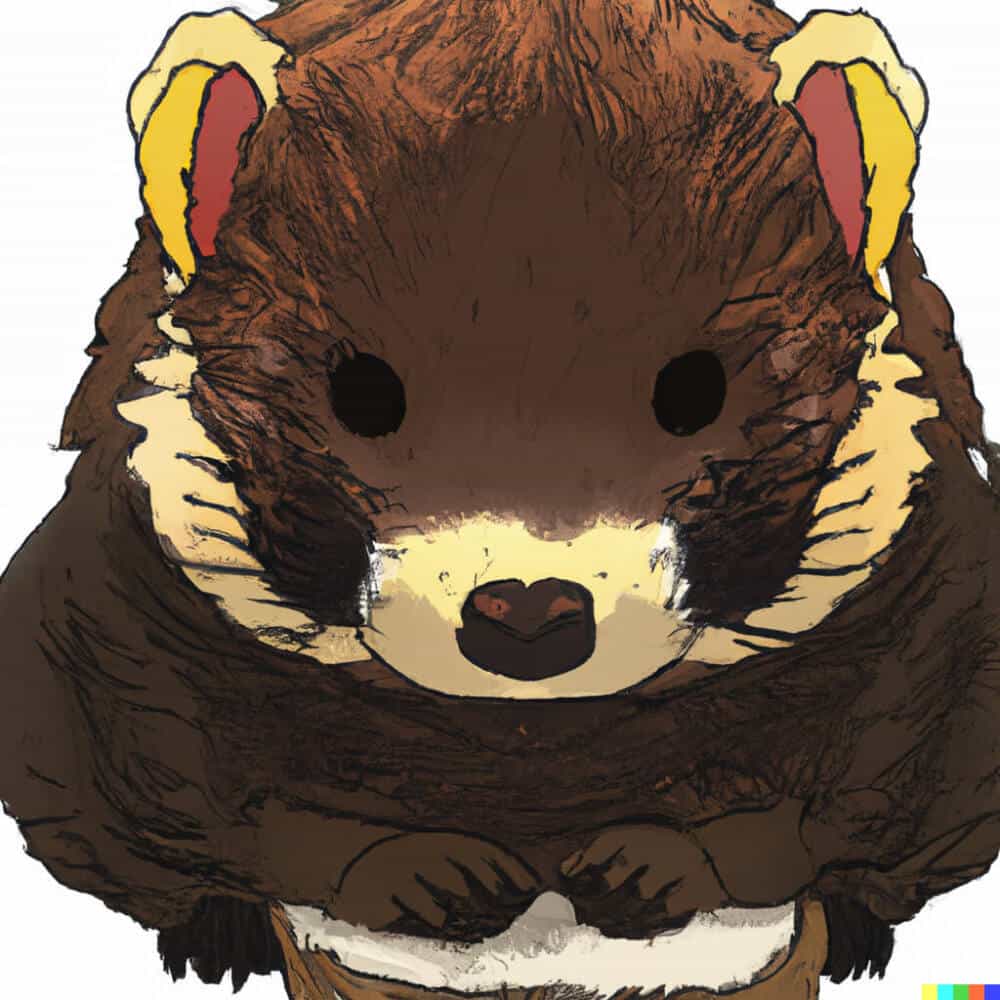
One of the most well-known legends about tanuki in Japanese mythology is the story of the “bake-danuki.”
According to the legend, a tanuki can use its magical powers to shape-shift into a human form and trick people into giving them food and drink. In some versions of the story, the bake-danuki is believed to be a friendly and helpful creature that assists people in their daily lives.
In others, it is depicted as a mischievous and sometimes dangerous trickster.
In Japanese folklore, tanuki are also associated with wealth and prosperity.
They are often depicted with large bellies and wearing straw hats, carrying a bottle of sake and a promissory note.
This is meant to symbolize their love of drinking and gambling, as well as their ability to bring good fortune and prosperity to those who honor them.
Tanuki are also believed to have the power to shape-shift into inanimate objects, such as teapots, lanterns, or even buildings. This ability is often used to trick and confuse their enemies or to hide from danger.
In Japanese art, tanuki are often depicted with large testicles, which are believed to symbolize their fertility and prosperity. They are also depicted with their signature straw hats, bottles of sake, and promissory notes.
Overall, tanuki are an important and fascinating part of Japanese mythology.
They are associated with trickery, wealth, and prosperity, and they are revered for their magical powers and ability to shape-shift into a wide variety of forms.
Kappa in Japanese Mythology
Kappa is a popular creature in Japanese mythology that is often depicted as a water imp or river spirit.
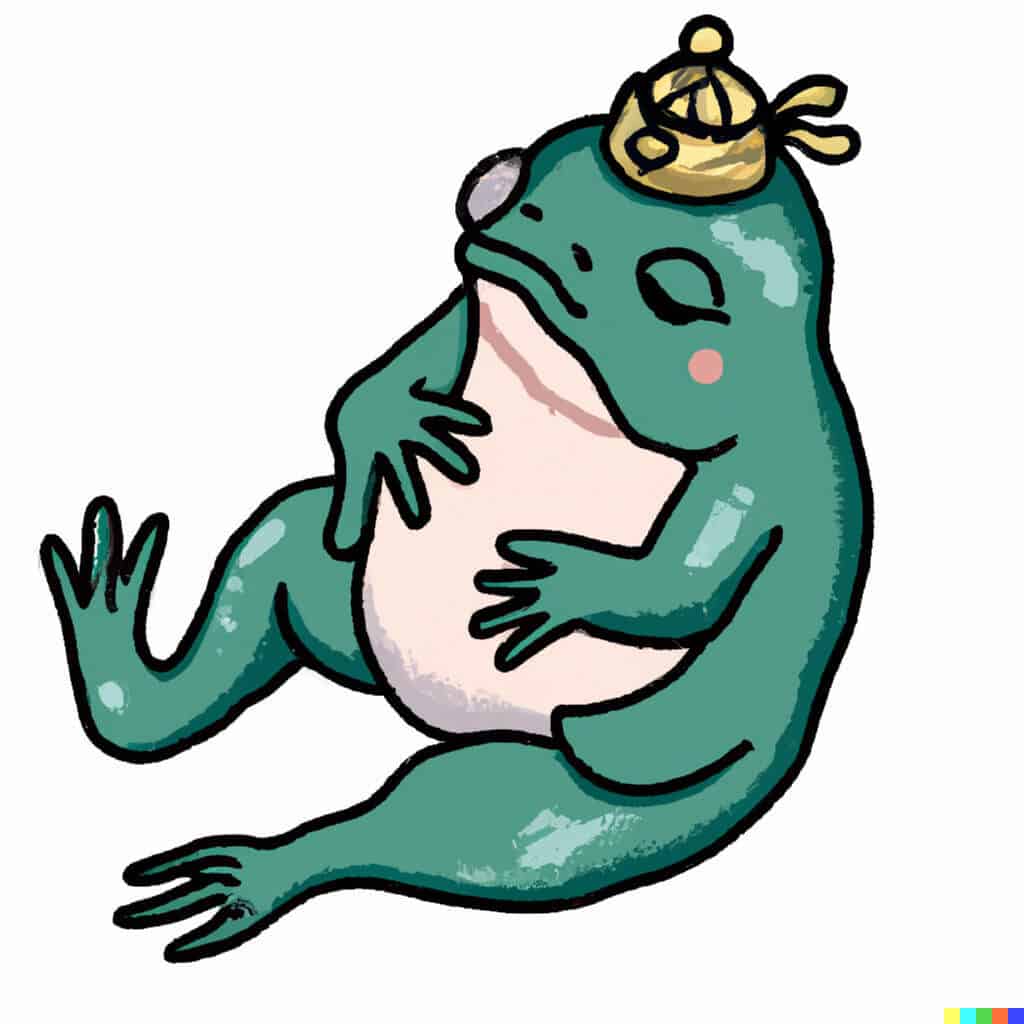
It is believed to live in bodies of water, such as rivers, lakes, and ponds, and is known for its mischievous and sometimes malevolent behavior.
In Japanese folklore, Kappa is said to have a humanoid shape with scaly green skin and a beak-like mouth. It has a distinctive concave depression on the top of its head that is said to hold water, which gives it its name.
The Kappa is also depicted with webbed feet and hands, which it uses to swim and catch prey.
One of the most well-known characteristics of Kappa in Japanese mythology is its love of cucumbers.
It is said that if a person is being chased by a Kappa, they can offer it a cucumber as a peace offering and it will let them go unharmed.
It is also believed that Kappa can be appeased by offering them other gifts, such as sake or sumo wrestling.
However, Kappa is also known for its mischievous behavior, such as playing pranks on humans or drowning people and animals in bodies of water.
According to legend, the only way to defeat a Kappa is to make it bow deeply, causing the water in its head to spill out, which weakens it.
Kappa is also associated with medicine and healing in Japanese mythology. It is said that Kappa has a special liquid in its head that can cure diseases and injuries, and that humans can extract this liquid by making the Kappa bow deeply and spill the liquid out.
In Japanese art, Kappa is often depicted with its signature bowl-shaped depression on the top of its head, as well as its love of cucumbers and other gifts. It is also often shown in its natural habitat, such as rivers or lakes.
Overall, Kappa is a fascinating and important creature in Japanese mythology. It is known for its mischievous behavior, its love of cucumbers, and its association with medicine and healing. Despite its sometimes malevolent behavior, Kappa is a beloved and iconic figure in Japanese folklore.
Tengu In Japanese Mythology
Tengu is a mythical creature that features prominently in Japanese mythology.
They are often depicted as powerful and intelligent beings that possess both human and bird-like characteristics.
Tengu are typically portrayed as mischievous tricksters or fierce protectors of the natural world, depending on the legend.
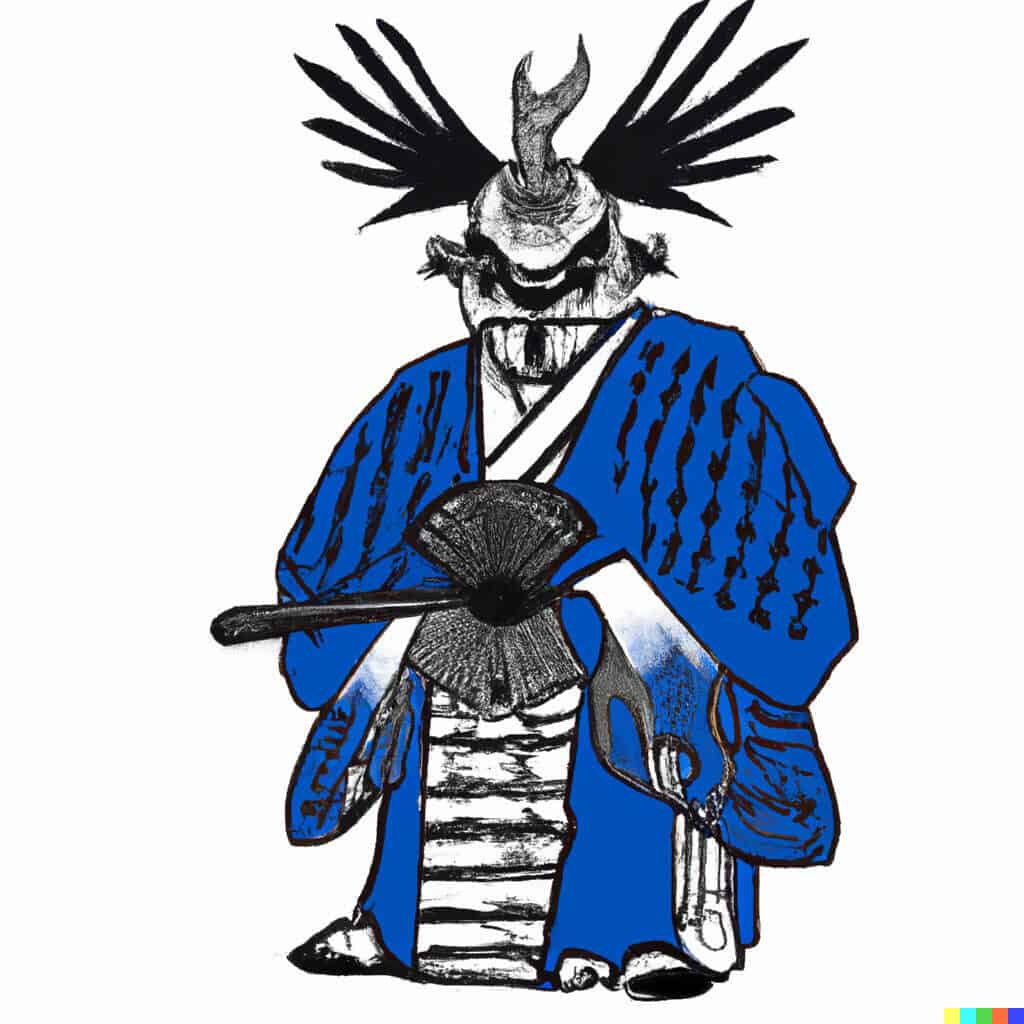
In Japanese folklore, Tengu are believed to have originated from the spirits of deceased warriors who became kami, or divine beings, upon their death.
They are often depicted with wings, sharp claws, and a beak-like nose. Some legends describe them as being able to shape-shift into human form, while others portray them as bird-like creatures with the ability to fly.
Tengu are known for their martial arts skills, and are often depicted wielding weapons such as swords, staffs, or bows and arrows.
They are also said to possess supernatural powers such as telekinesis, invisibility, and the ability to control the weather.
In some legends, Tengu are known for their mischievous behavior, such as playing pranks on humans or leading them astray in the mountains.
In other stories, they are seen as protectors of the natural world, punishing those who harm the environment or the animals that live in it.
One of the most famous Tengu in Japanese mythology is the character Sōjōbō, who is said to be the leader of the Tengu in the mountainous regions of Japan.
Sōjōbō is often depicted as a wise and powerful mentor to humans, teaching them martial arts and other valuable skills.
In Japanese art, Tengu are often depicted with their signature bird-like features, such as wings and a long nose.
They are often shown wearing flowing robes and carrying weapons, or engaging in martial arts battles.
Overall, Tengu are a fascinating and complex creature in Japanese mythology.
They are known for their martial arts skills, supernatural powers, and mischievous behavior, and are seen as both powerful protectors and tricksters.
Their iconic bird-like features and their important role in Japanese folklore have made them a beloved and enduring figure in Japanese culture.
Serpent in Japanese Mythology
In Japanese mythology, the serpent, or “hebi,” is a significant creature that has been featured in numerous stories and legends.
It is often depicted as a symbol of power, transformation, and rebirth, and is associated with both the natural world and spiritual realm.
One of the most famous serpent creatures in Japanese mythology is the Yamata no Orochi, a monstrous eight-headed and eight-tailed serpent.
According to legend, the Yamata no Orochi terrorized a local village, demanding sacrifices of young maidens every year.
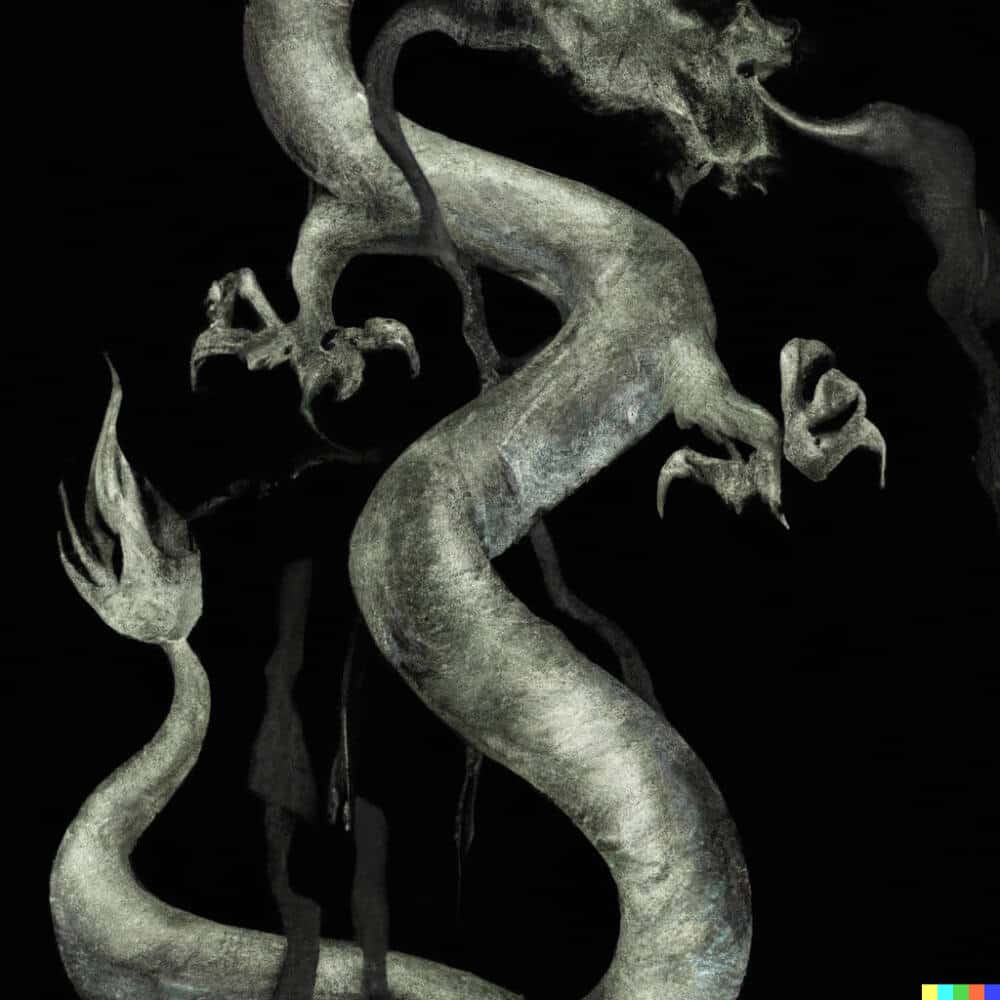
The hero Susanoo, one of the gods in Japanese mythology, eventually slayed the serpent, freeing the village from its terror.
In some stories, the serpent is also associated with transformation and shape-shifting abilities.
The legend of the “nue” describes a creature that appears as a mix between a monkey, snake, and bird, and is said to have shape-shifting abilities.
It is often depicted as a symbol of chaos and disruption, and is associated with dark magic and evil.
Serpents are also associated with the natural world and are often depicted as guardians of sacred places or powerful sources of energy.
The serpentine creature “ryujin” is the god of the sea and is often depicted as a powerful dragon-like serpent that controls the tides and protects ships and sailors.
In addition to their symbolic and spiritual significance, serpents are also often used in Japanese art and design.
The intricate and sinuous lines of serpents are used in traditional Japanese tattoos and are often incorporated into other art forms, such as ceramics and textiles.
Overall, the serpent is a powerful and complex creature in Japanese mythology.
It is associated with transformation, power, and the natural world, and has been featured in numerous stories and legends. Its intricate and sinuous form is also an important element of Japanese art and design.
Cat in Japanese Mythology
In Japanese mythology, the cat, or “neko,” is a significant creature that has been featured in numerous stories and legends. It is often depicted as a symbol of good fortune, protection, and mystical powers.
One of the most famous cat creatures in Japanese mythology is the “bakeneko,” a supernatural being that is said to be a cat that has lived for an unusually long time and gained magical powers.
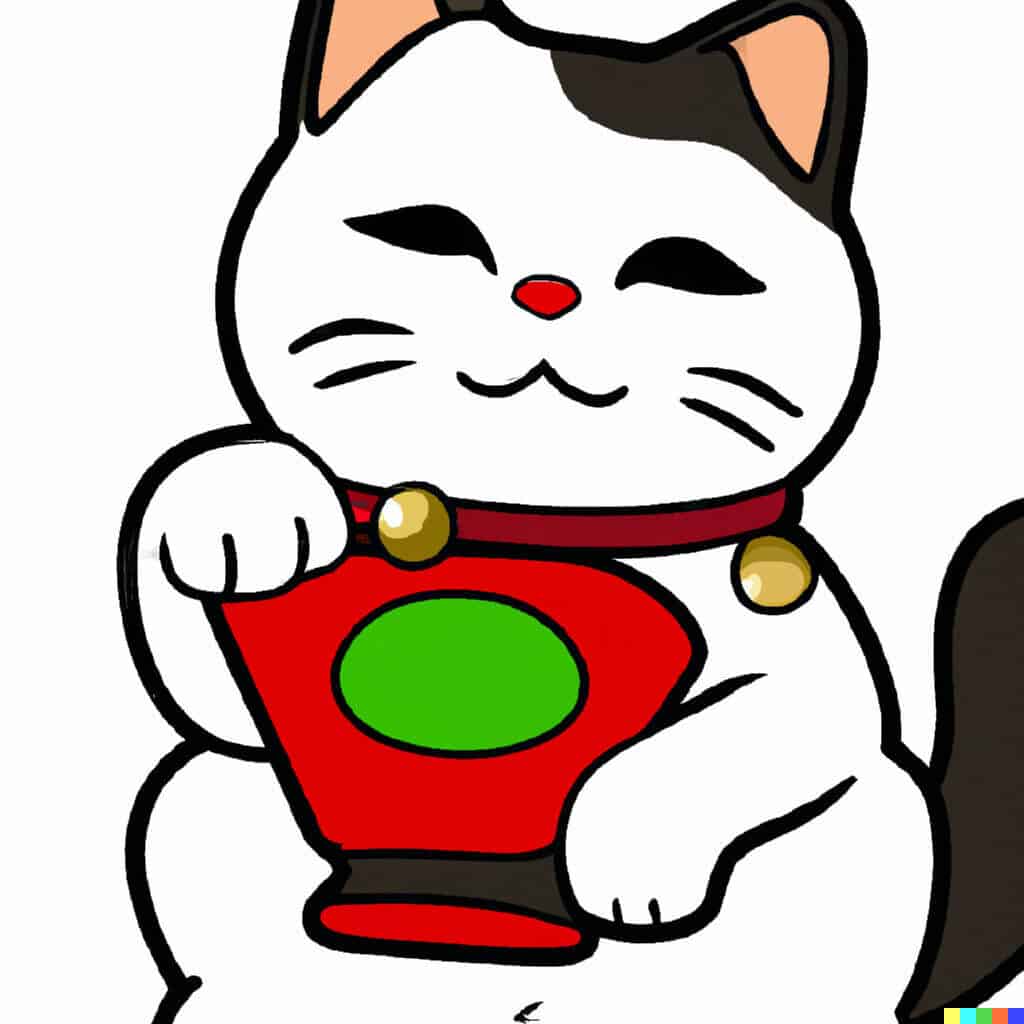
Bakeneko are often depicted as shape-shifting creatures that can transform into humans or other animals.
They are known for their mischievous behavior and are said to be able to possess humans or manipulate the dead.
In addition to the bakeneko, the cat is also associated with good luck and protection. The “maneki-neko,” or beckoning cat, is a popular talisman that is often found in Japanese homes and businesses.
The maneki-neko is usually depicted as a sitting cat with one or both paws raised in a beckoning gesture.
It is believed to bring good luck and fortune to those who possess it.
Cats are also associated with the gods in Japanese mythology. The goddess “Bastet,” known as the goddess of cats, is worshipped in some regions of Japan.
Cats are also said to be able to see into the spirit world, and are sometimes depicted as messengers of the gods.
In Japanese art, the cat is often depicted in traditional ukiyo-e prints, as well as in contemporary manga and anime.
The iconic shape and features of the cat, including its pointed ears and curved tail, are often incorporated into Japanese design and fashion.
Overall, the cat is a significant and beloved creature in Japanese mythology. It is associated with good fortune, protection, and mystical powers, and has been featured in numerous stories and legends.
Its iconic shape and features have also made it an important element of Japanese art and design.
In conclusion, animals play a significant role in Japanese mythology. They are often depicted as powerful, spiritual beings with magical powers.
The dragon, fox, tanuki, kappa, tengu, serpent, and cat are just a few examples of the important animals in Japanese mythology.
Understanding these animals and their significance can provide insight into Japanese culture and beliefs.
Also Read
My writing focuses on the various aspects of Japanese lifestyle, from traditional tea ceremonies and flower arrangement to modern fashion trends and pop culture. Through my articles, I aim to share my passion for Japan and provide readers with a glimpse into the rich and diverse world of Japanese culture.
I believe that the key to understanding Japanese lifestyle is to appreciate the balance between tradition and innovation. While Japan has a rich cultural heritage that dates back centuries, it is also a country that is constantly evolving and embracing new ideas and technologies.
Whether you’re interested in learning about the latest fashion trends in Tokyo, or want to explore the ancient art of calligraphy, my writing will take you on a journey through the many facets of Japanese lifestyle. So join me as we explore the beauty and complexity of this fascinating culture together!



